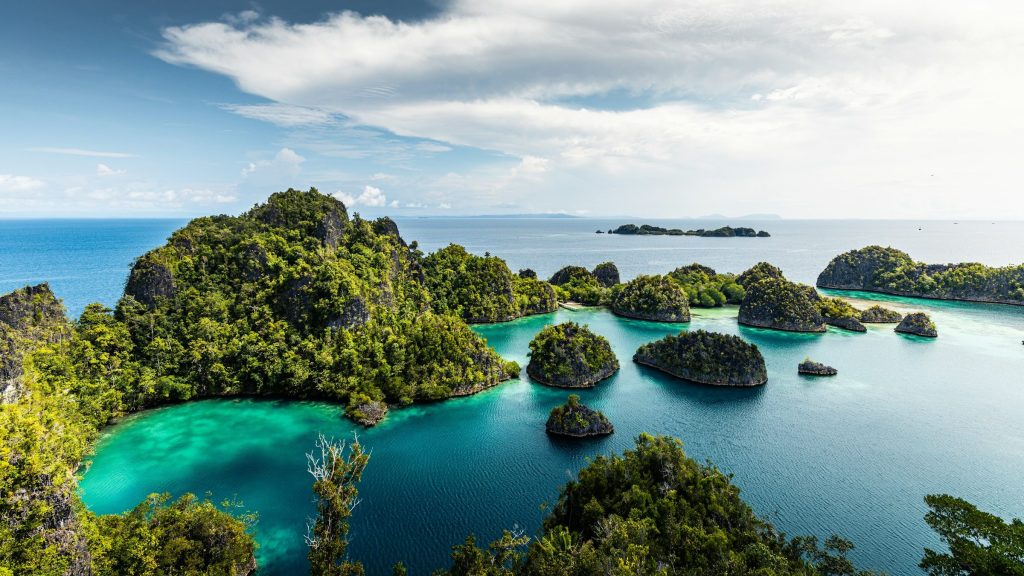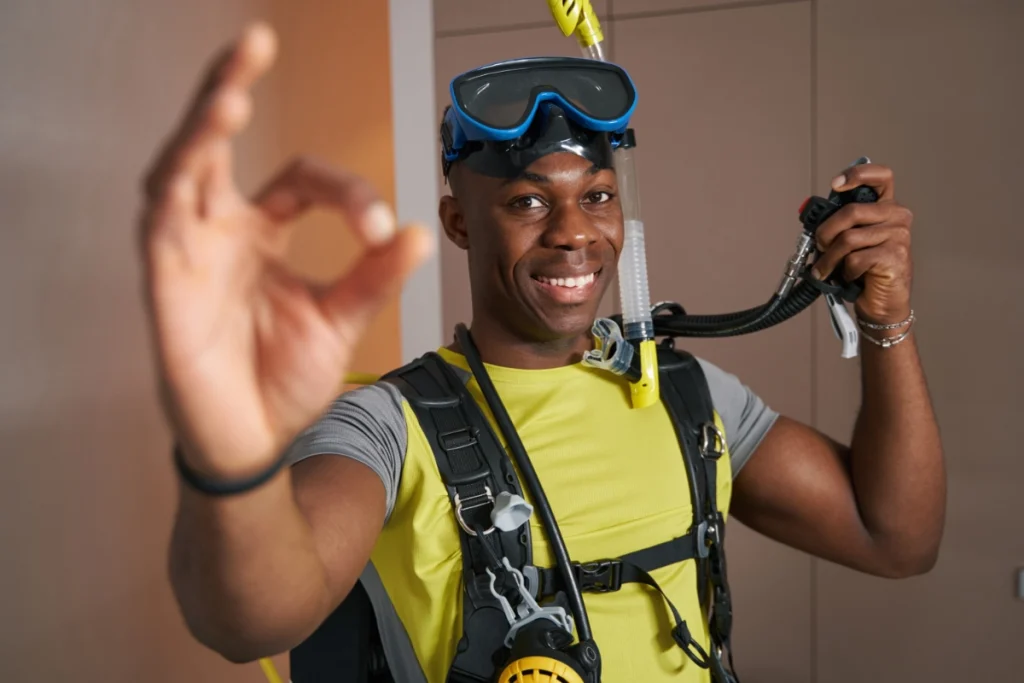Raja Ampat, the last paradise

Raja Ampat is a top diving destination and, by many, considered the last paradise on Earth.
Close your eyes and imagine the stunning range of blue hues stretching across the horizon, the tropical sun rays caressing your skin, the salty wind blowing through your hair, and tiny islets scattered around crystal-clear waters. Beneath the surface lies a marine Eden where each inhabitant has a defined purpose and place, creating a harmonious ecosystem.
This Indonesian archipelago is located far to the east, in the western part of Papua, on the Birds Head Peninsula. It’s known for its paradise beaches and rich coral reefs, making it a must-visit destination for every diver’s bucket list. Raja Ampat consists of four main islands, each named after the four kings that legend says hatched from dragon eggs. These kings settled on one of the larger islands, and the remnants of the shells transformed into rocks that are abundant in the region. Waigeo is home to unique crimson paradise birds, while Misool boasts a heart-shaped bay and ancient cave paintings. Batanta and Salawati are surrounded by an archipelago of scattered smaller islands and islets, mostly covered in jungle and uninhabited by humans. Raja Ampat is perfect for those who appreciate the beauty of nature, whether it’s diving, snorkelling, or simply enjoying the scenery.
Travelling to Raja Ampat can be tiring, but it’s worth it. You’ll forget all discomforts and immerse yourself in the heavenly landscape once you arrive. To get there, fly to Indonesia, preferably Bali or Jakarta, and then plan a flight to Sorong, the main gateway to the park. Unfortunately, there are no direct flights, so expect a stopover somewhere in Sulawesi. Sorong is a crowded port city, so it’s recommended that you stay there for a short time. From Sorong, you can fly to the capital of Raja Ampat, the small town of Waisai (Marinda Airport), hop on a liveaboard, or catch a boat to one of the larger islands.
I think it’s best to organise everything beforehand with the operator you’ll be diving with. Once you’re there, put away your mobile phone – there’s little to no signal in most places – relax completely and immerse yourself in nature.
The best way to explore Raja Ampat is on a liveaboard. It’s a bit expensive but worth every penny. You’ll live on local delicacies or hike nearby peaks of uninhabited islets. At times, you’ll feel like you and your crew are the only people on Earth, surrounded by unspoiled nature, admiring the same landscape that famous explorer Alfred R. Wallace traversed in the 19th century.What sets apart a trip through Raja Ampat on a liveaboard is that while diving, you’re usually the only group at the dive site, resulting in unique interactions with the underwater world.

Below the surface of the surrounding blue, you’ll experience an explosion of colors from flourishing coral reefs creating a kaleidoscope of unique formations and shapes, pleasing even the most demanding enthusiasts of underwater nature. With each descent, you’ll enter a frame of the blue planet; the marine world comes alive before your eyes, revealing secrets as if someone pressed the PLAY button. Surrounded by nature’s treasures, with Sir David Attenborough’s voice in your head describing the incredible fish species coming from all directions, Raja Ampat is love at first dive. The diversity of species, schools of fusiliers and trevallies gracefully drift in the sea currents, yielding only larger specimens like Napoleon wrasses, bump heads, or mantas. Shy little seahorses desperately twirl their tails around coral branches to avoid the current, while nearby, without much effort, whitetip and blacktip sharks patrol the reef in search of a meal.
If you prefer solid ground instead of living on a limited sailboat space, you must visit Misool. There are over 40 dive sites around the island, with the furthest one about 15 minutes by boat. Diving is characterised by extraordinary visibility, reaching 30-40 meters, and water temperatures averaging around 28-30�C. Most dives are drift dives, carried out in the mild currents characteristic of Raja Ampat, making diving accessible even to less experienced enthusiasts. The site’s richness is fascinating, both in terms of fauna and flora. You can admire not only colourful coral formations but also giant fans, gorgonians, and various sponges. You may encounter large pelagic fish or playful dolphins occasionally visiting these waters if you’re lucky.
Raja Ampat is not just a destination; it’s a dream come true for every diver and nature lover. Whether you choose a live-aboard adventure or stay on land in one of the resorts or homestays, every moment here is a step closer to paradise. So pack your gear, embark on a journey to the last paradise on Earth, and let Raja Ampat’s enchantment captivate you.
If you’re looking for more detailed information on travel logistics, dive sites, or specific recommendations for your trip to Raja Ampat, feel free to ask the author.
” Hi there! it’s Laura and I’m here to help you plan the perfect dive adventure.”





